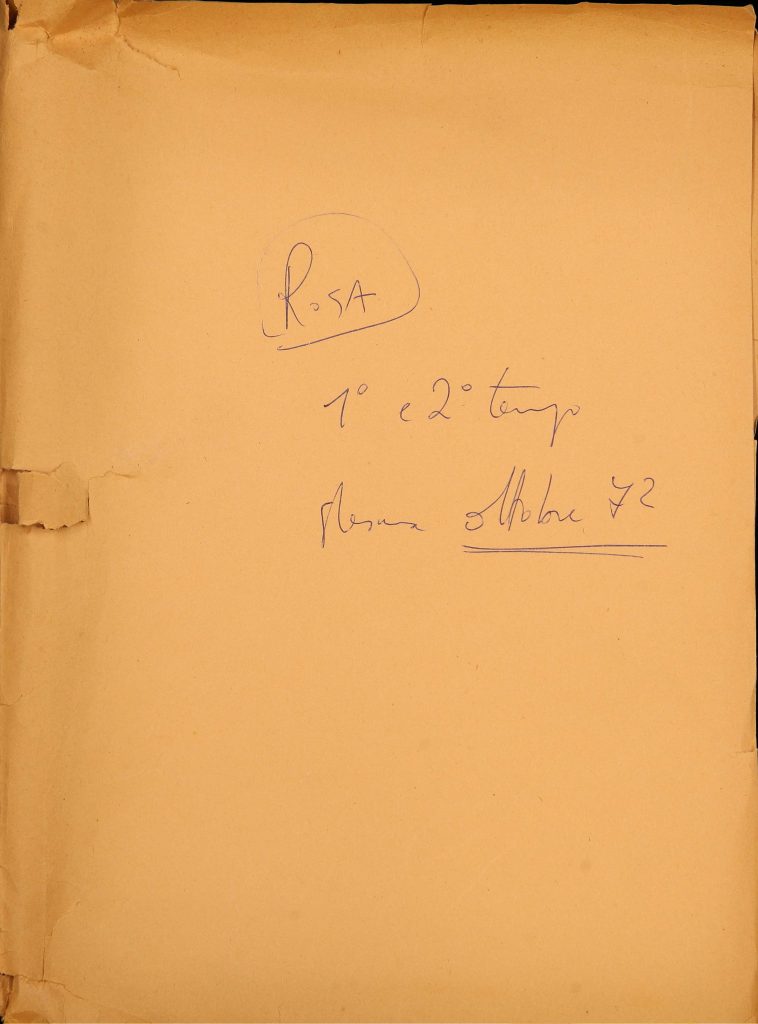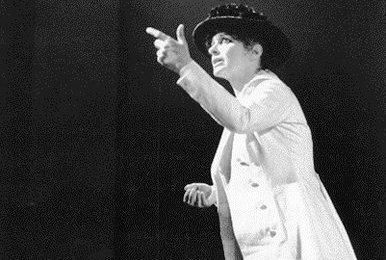Debutto: Genova, porto, sala della Chiamata, 12 febbraio 1976 (filmato RaiTeche)
| Regia | Luigi Squarzina |
| Regista assistente | Marco Sciaccaluga |
| Assistente alla regia | Giulio Trevisani |
| Scene e costumi | Gianfranco Padovani |
| Musiche | Roman Vlad |
| Produzione | Teatro Stabile di Genova |
Personaggi e interpreti
| Lenin / Karl Liebknecht | Omero Antonutti |
| Rosa Luxemburg | Adriana Asti |
| Ignaz Aver / un operaio | Enrico Ardizzone |
| Il clown / un operaio | Renato Berni |
| Emil Eichhorn / Kamo / una Guardia bianca/un operaio | Patrizio Caracchi |
| Il giornalista borghese / il delegato menscevico / Gustav Lübeck | Franco Carli |
| Karl Radek / il pantalone (Krupp) / un operaio | Donatello Falchi |
| Rosi Wolfstein / una prostituta | Jackie Gerbino |
| Luisa Kautsky / Clara Zetkin / la Kruppskaja / la merciaia | Rachele Ghersi |
| Leo Jogiches / un operaio | Alessandro Haber |
| Hans Diefenbach / il tenente delle Guardie bianche / un operaio | Massimo Lopez |
| Un operaio / Kostia Zetkin | Massimo Mesciulam |
| Friedrich Ebert / una prostituta / il cardinale (un latifondista) | Camillo Milli |
| Gustav Noske / l’ispettore carcerario / un operaio | Maggiorino Porta |
| Paul Levi / Massimo Gorki/un operaio | Carlo Reali |
| Un’operaia / una prostituta / una borghese | Isabella Russo |
| Il capitano delle Guardie Bianche / il direttore del carcere / un operaio | Gianfranco Saletta |
| Philipp Scheidemann / il professore Wolff / un operaio | Claudio Sora |
| Anatolio Lunaciarsky / una Guardia Bianca / un operaio | Giulio Trevisani |
| Il trovatore (poeta espressionista) / un operaio | Vanni Valenza |
| Una pazza/la bajadera / un’operaia | Tatiana Winteler |
| Karl Kautsky / il cappellano / il preside di Varsavia / un borghese | Loris Zanchi |
E’ l’ultimo degli spettacoli storico-dialettici ideati da Squarzina. Scritto con Vico Faggi dopo un laboriosissimo lavoro durato quattro anni, basato su un vastissimo materiale e sul confronto delle varie fonti, non è teatro-documento, né teatro politico. E’ un dramma che rielabora il documento drammaturgicamente e rievoca i fatti con l’invenzione scenica secondo i canoni della teatralità. Ne sono espressione: la scenografia brechtiana di Padovani con i praticabili di ferro spostati a vista, la musica d’epoca di Vlad, il racconto delle passioni e degli amori di Rosa, le scene da gran teatro come quelle dell’amazzone in cilindro, del clown ai consigli di fabbrica e del ballo di carnevale. Anche la scena dello scontro tra la Luxemburg e Lenin non è appiattita sui documenti. Ancorché abbia precisi riferimenti a problematiche cruciali, come il ruolo del partito, il rapporto con le masse, la disciplina rivoluzionaria, lo spontaneismo politico, la scena tende a far emergere teatralmente le connotazioni politiche ed umane di due differenti personalità: la fredda lucidità e la cosciente sicurezza di Lenin che vincerà e l’ideologa appassionata, in cui è sempre presente il dubbio, che sarà sconfitta.
 “Noi volevamo far capire al pubblico che l’assassinio di Rosa da parte del potere ha molte analogie con il nostro tempo, perciò dovevamo farla uscire dal mito e farla ridiventare un personaggio vivo”.
“Noi volevamo far capire al pubblico che l’assassinio di Rosa da parte del potere ha molte analogie con il nostro tempo, perciò dovevamo farla uscire dal mito e farla ridiventare un personaggio vivo”.
Luigi Squarzina
Tratto da E. Testoni, Dialoghi con Luigi Squarzina, Firenze, Le Lettere, 2015, p. 182
Intervista a Luigi Squarzina
Si ringrazia il teatro Nazionale di Genova per la concessione dell’utilizzo del materiale fotografico.

